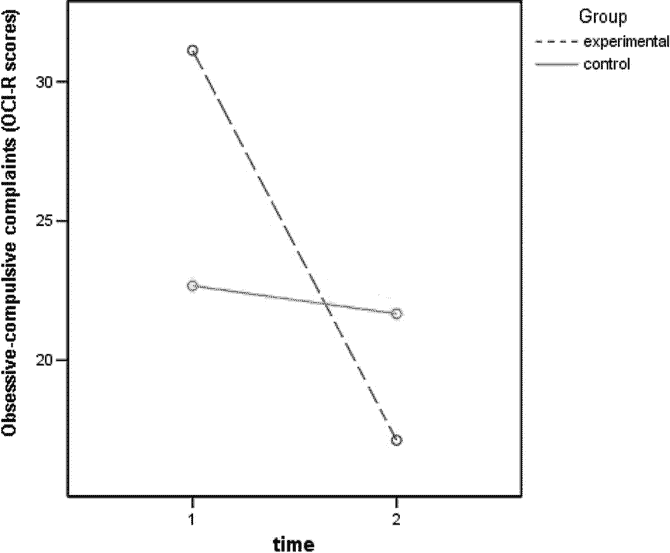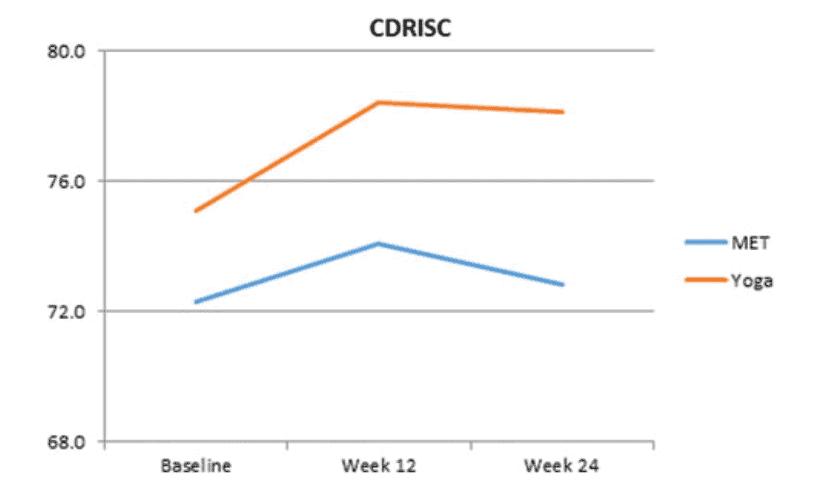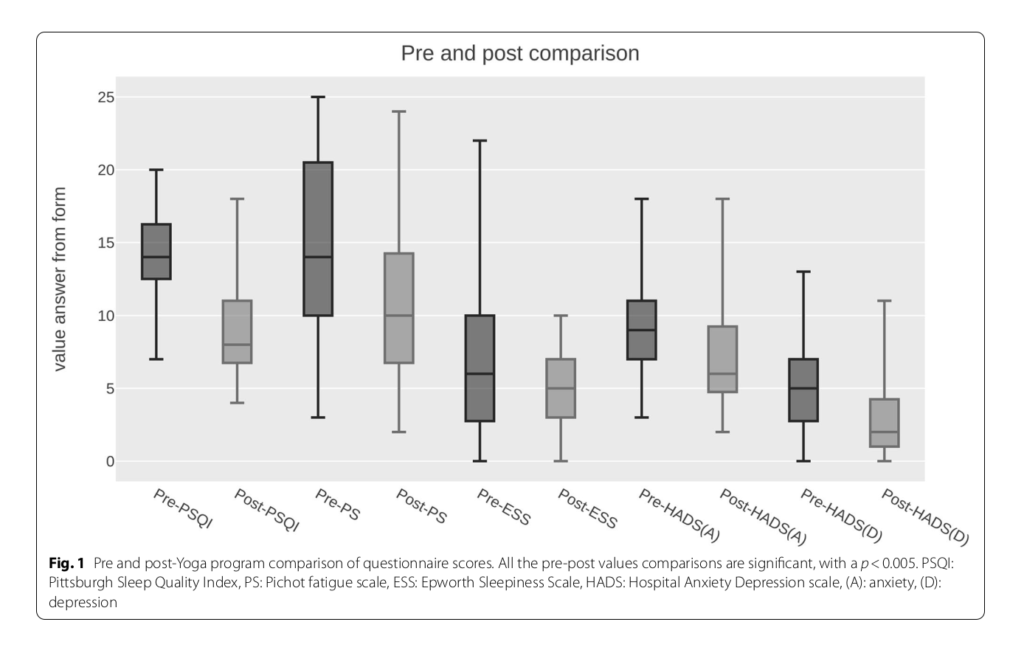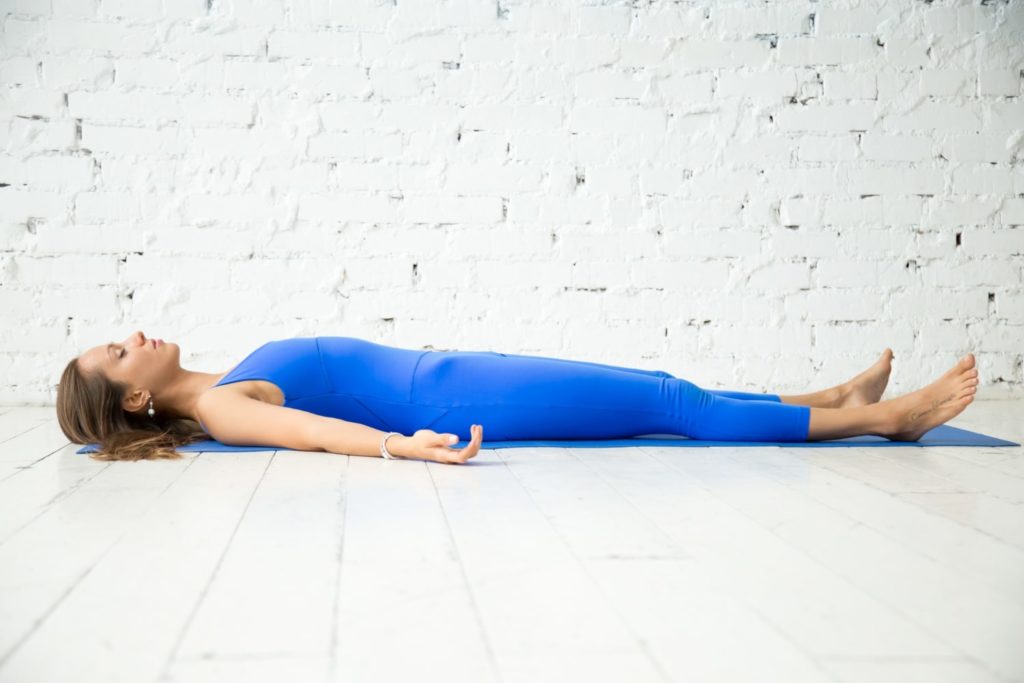
Rachael Cooper
Certified yoga instructor (Vinyasa and Hatha Yoga), CYT 200 teacher training certificate
Research and studies have shown that the continuous practice of yoga can assist, alleviate and improve several health conditions or markers. In this part 1, we will be focusing on:
- Attention Deficit Hyperactivity Disorder (ADHD)
- Obsessive-Compulsive disorder (OCD)
- Pre-Traumatic Stress Prevention (PTSP) and Post-Traumatic Stress Disorder (PTSD)
- Memory
- Quality of sleep
First, let’s start with explaining some of the most basic terms you have most likely already come across.
Terminology
Yoga is a discipline that encompasses eight aspects known as the “Eight Limbs of Yoga”. A growing body of research has found that specific components of yoga offer profound benefits for various psychological illnesses and disorders.
The practice of three of the eight limbs: Asanas (physical postures), pranayama (breath work) and dhyana (meditation) have gained recognition for their ability to positively influence people psychologically.
Yoga asanas are the physical postures or poses practised in yoga. They involve specific body positions and movements designed to enhance physical strength and flexibility, while also promoting an individual’s overall wellbeing.
Asanas can be very simple or complex and are a central component of yoga practice. They can be adapted to different levels of experience. Each asana targets specific muscle groups and holds many different physical and mental health benefits.[1]
Pranayama (breath work) reflects our mental and physical state, regulated by the autonomic nervous system. Noticing our breath pattern indicates our overall health. Breath work stimulates the vagus nerve, key to physical and mental health.
RELATED — Introduction to Breathing: Our foundation of health
Pranayama involves four stages: inhale, retention, exhale, and pause. Various patterns and techniques adapt to individual needs, such as changing the length of the breath, directing breath through the nose or mouth, or focusing on the physical sensations of the breath. This allows us to find one to suit our individual needs for that specific time.[2]
Pranayama enhances vagus nerve function
Meditation has been receiving a lot of attention over the last decade and advances in technology reveal the benefits of regular meditation for diverse health areas.
Just as pranayama activates the vagus nerve, meditation enhances neuroplasticity, an essential cognitive function aspect. Neuroplasticity rewires neural pathways and creates connections.
Mindfulness meditation involves focusing on breath, sensations, or mantras non-judgmentally. Rooted in Buddhist practices, it’s gained popularity due to research-backed advantages, especially in psychology.[3]
Attention Deficit Hyperactivity Disorder (ADHD)
Yoga asanas and pranayama have been shown to reduce ADHD symptoms. Physical exercise such as practising vinyasa yoga, enhances neuroplasticity.
Vinyasa yoga is where the sequence of asanas is synchronised with the breath. This helps to automate breathing and allows a better supply of oxygen to the brain.[4]
RELATED — How we breathe: Different types of breathing
Alongside the asanas, pranayama improves attention, emotional regulation, and cognitive function. This is achieved by activating the vagus nerve and parasympathetic nervous system.[5]
There have been numerous studies conducted on the effectiveness of yoga and ADHD management in children. One study involving 48 children, some on medication, investigated the six-week impact of practising yoga asanas and meditation on managing:
- ADHD symptoms
- self-esteem
- parent-child relationships[4]
The study used the Conners Scale, an assessment tool used to determine ADHD. For the 28 non-medicated children, the average score from assessments fell from 22.54 to 14.63. Similar improvements were observed in the 20 medicated children, with 11 significantly reducing their medication.
From 48 children, 92% of their parents reported increased self-confidence, improved sleep, and better cooperation. Teachers also noted easier behaviour management, improved school performance, and homework completion.[6,7]
These findings suggest that the meditation programme had positive effects on child wellbeing and parent-child relationships.
Obsessive-compulsive disorder (OCD)
Mindfulness is a key part of yoga practice. When integrating a mindful asana practice, such as restorative yoga, and mindfulness meditation, we can see that these are effective tools in assisting OCD symptoms.
RELATED — Introduction to Mindfulness: Enjoy the present moment and appreciate life
Mindfulness empowers the non-judgemental within the present moment. With practice, individuals can learn to train themselves to respond effectively to compulsions.[8]
Mindfulness meditation techniques, including breath focus, body scans, and integrating mindfulness into daily routines, produced positive outcomes for OCD symptoms in a study of 17 individuals across an eight-week period.[9]

In the experimental group, the study consisted of eight one-hour sessions dedicated to the instruction and practice of mindfulness methods, showing a reduction in OCD symptoms (OCI-R scores).[9,10]
Another study researched the effects of yoga in five participants with mild to moderate symptoms of OCD who were on stable medication to help manage their OCD symptoms. The study showed that one month of yoga led to significant improvements in obsessions, compulsions, depression, and anxiety scores.

Their overall OCD scores dropped 20-68% between the five participants. Anxiety rating scores fell between 45-66% and there was a 50% decrease in depressive symptoms.[11]
Pre-Traumatic Stress Prevention (PTSP) and Post-Traumatic Stress Disorder (PTSD)
Combining asanas, meditation, pranayama, mindfulness and deep relaxation, such as yoga nidra, can significantly improve symptoms of PTSP and PTSD even with different trauma experiences.
These aspects of yoga have been shown to help with insomnia, regulate stress and anxiety, and improve resilience. Individuals suffering from PTSP and PTSD often have symptoms of muscle tightness and chronic pain.[12]
In one study researchers focused on assessing the influence of yoga on individuals with PTSD. The study incorporated asanas, pranayama, meditation, and relaxation spanning eight weeks.
For the experimental group, each weekly yoga session lasted an hour, accompanied by daily 15-minute personal practice. The control group continued to have therapy sessions.
In the study, yoga significantly reduced PTSD and stress levels, enhancing positive affect and resilience. Both groups experienced decreased depression, anxiety, and stress, with yoga participants showing greater anxiety and stress reduction.[12]
Another study, Real Human Performance and Cincinnati VA Medical Center, examined the impact of Yoga on PTSD in veterans. The eight-week programme, featuring pranayama, asanas, yoga nidra, meditation, and gratitude, significantly reduced PTSD symptoms.

Perceived Stress Scale dropped from 27.8 to 21.2 (the US national average is 13). Also, PTSD checklist scores reduced from 57 (high severity of PTSD) to 34 (moderate severity of PTSD).[13,14]
Memory
There has been a lot of research on yoga and the brain, particularly in the hippocampal area. We have known for a number of years that yoga can positively affect cognitive function, however, more recent studies have delved deeper into the impact of yoga, particularly meditation, and the brain.
Yoga can positively affect cognitive function
Brain scans show that regular practitioners of yoga had larger regions of their brain compared to non yoga practitioners, which are linked to memory and information processing.
One particular study involved an eight-week Mindfulness-Based Stress Reduction (MBSR) course with 33 individuals to look at the changes in brain structure, specifically focusing on memory-related regions.
Sixteen individuals from the group practised daily mindfulness meditation, including body scans, yoga, and sitting meditation. The study aimed to validate the hypothesis of increased grey matter in the left hippocampus, essential for memory and emotional regulation.
The MBSR group displayed notable increases in left hippocampal grey matter, affirming the potential of mindfulness for enhancing memory, emotional control, and stress adaptation through brain structure changes.[15]
Another study conducted to look at the difference in effectiveness in doing yoga for memory compared to memory enhanced training. The yoga training consisted of 24 weeks of one guided 60 minute session a week, along with 12 minute daily personal practice, both included asanas, pranayama, meditation and mantras.[16]

The results showed both groups showed substantial improvements in verbal and visual memory.[17]
Quality of sleep
Yoga has gained recognition for its positive impact on sleep quality, even for people suffering from common sleep disorders, such as insomnia and restless leg syndrome.
RELATED — Different types of sleep: which one do we need the most?
One of the key ways yoga contributes to better sleep is its ability to help reduce stress and anxiety. The mindfulness aspect of yoga helps calm the nervous system and reduce the production of stress hormones.
Yoga promotes non-judgmental self-confidence through mindful meditation and helps individuals adapt to body and mind. This awareness extends to sleep patterns and helps identify sleep disturbances.[17]
A 2022 study showed that the yoga practice leads to significant improvements in subjective sleep quality, reduced anxiety, depression, and fatigue, as well as decreased daytime sleepiness.

Additionally, objective measures such as reduced arousals during sleep also support the positive impact of yoga on sleep quality. Some objective sleep measures, however, such as total sleep time and sleep efficiency, did not show significant changes.[18]
Related Questions
1. Can yoga help with Traumatic Brain Injury (TBI)?
Although there are only a few studies, there is evidence that yoga can be used as a therapeutic approach for TBI.
A 2019 Samford University study suggests that integrating yoga into the rehabilitation regimens of traumatic brain injury patients could lead to beneficial outcomes.[19]
2. Will practising yoga help me relax before going to sleep?
Many medical experts recommend yoga for better sleep, with research ongoing to explore the sleep-enhancing potential of yoga nidra.
Current results suggest that yoga nidra can improve sleep by reducing the time it takes to fall asleep and improving overall sleep quality.[20]
3. Which yoga is best for boosting memory?
Meditation seems to show the most notable enhancements in boosting memory.
Research has shown that consistent meditation can enhance the cerebral cortex, which is responsible for cognitive functions like learning, concentration, and memory.[21]
Yin Yoga is a meditative type of yoga that can be an effective option to take.[22]
For more similar articles, please check our Wellness section.
Certified yoga instructor (Vinyasa and Hatha Yoga), CYT 200 teacher training certificate
Rachael first started practicing Hatha Yoga in 2014, and since 2017 has been focused on the Iyengar method, where she learned the importance of alignment and precision in asana, and creating yoga as a discipline.
Rachael is passionate about bringing the meaning of yoga and its practice into the community to create freedom from dis-ease in the body and mind. This is why she is continuously improving and evolving as a teacher and is currently in the process of completing CYT 300 teacher training certificate.
If you would like to know more about Racheal, please visit The Yoga Project. Rachael also holds free yoga classes at the local park as well as private indoor venue sessions.
References
(1) Iyengar, B. K. S. (1968). Light on yoga : yoga dipika. In Allen and Unwin eBooks.
(2) Iyengar, B. K. S. (2013). Light on Pranayama: The Definitive Guide to the Art of Breathing. HarperCollins Publishers.
(3) Neuroscience News. (2021). Yoga and breathing exercises aid children with ADHD to focus. Neuroscience News. Retrieved from https://neurosciencenews.com/focus-yoga-adhd-18435/
(4) Gunaseelan, L., Vanama, M. S., Abdi, F., Qureshi, A., Siddiqua, A., & Hamid, M. a. B. (2021). Yoga for the management of Attention-Deficit/Hyperactivity Disorder. Cureus. Retrieved from https://doi.org/10.7759/cureus.20466
(5) International OCD Foundation. (2020, August 5). International OCD Foundation | Mindfulness and Cognitive Behavioral Therapy for OCD. Retrieved from https://iocdf.org/expert-opinions/mindfulness-and-cognitive-behavioral-therapy-for-ocd/
(6) Salamon, M. (2020, July 16). Conners scale for ADHD assessment. WebMD. Retrieved from https://www.webmd.com/add-adhd/childhood-adhd/conners-rating-scale#:~:text=The%20Conners%20rating%20scale%20is,%2C%20home%20life%2C%20and%20relationships
(7) Gunaseelan L, Vanama MS, Abdi F, Qureshi A, Siddiqua A, Hamid MA. Yoga for the Management of Attention-Deficit/Hyperactivity Disorder. Cureus. 2021 Dec 16;13(12):e20466. doi: 10.7759/cureus.20466. PMID: 35070529; PMCID: PMC8760933.
(8) Mindful Communications & Such PBC. (2023, January 6). Getting Started with Mindfulness – Mindful. Mindful. Retrieved from https://www.mindful.org/meditation/mindfulness-getting-started
(9) Hanstede M, Gidron Y, Nyklícek I. The effects of a mindfulness intervention on obsessive-compulsive symptoms in a non-clinical student population. J Nerv Ment Dis. 2008 Oct;196(10):776-9. doi: 10.1097/NMD.0b013e31818786b8. PMID: 18852623.
(10) Hegarty, D. (2023, February 28). Obsessional compulsive inventory – revised (OCI-R). NovoPsych. Retrieved from https://novopsych.com.au/assessments/diagnosis/obsessional-compulsive-inventory-revised-oci-r/
(11) Bhat, S. G., Arasappa, R., Jagannathan, A., & Varambally, S. (2021). Yoga therapy for Obsessive Compulsive Disorder (OCD): A case series from India. Asian Journal of Psychiatry, 62, 102739.
(12) Jindani, F., Turner, N. E., & Khalsa, S. B. S. (2015). A yoga Intervention for Post-traumatic Stress: A preliminary randomized control trial. Evidence-based Complementary and Alternative Medicine, 2015, 1–8. Retrieved from https://doi.org/10.1155/2015/351746
(13) Hölzel, B. K., Carmody, J., Vangel, M., Congleton, C., Yerramsetti, S., Gard, T., & Lazar, S. W. (2011). Mindfulness practice leads to increases in regional brain gray matter density. Psychiatry Research: Neuroimaging, 191(1), 36–43.
(14) Wright, J. J. W., Kinzeler, N. R. K., Renzenbrink, A. R., Chard, K. M. C., Adcock, Peters, M. P., Gregory, S. G., Kissell, K. M. K., & Wilson, J. F. W. (n.d.). Adding Mindful Yoga Therapy (MYT) to current clinical therapies improves stress related outcomes for veterans.
(15) PTSD CheckList – Civilian Version (PCL-C). (n.d.). Boston University. Retrieved from https://www.bu.edu/wheelock/files/2018/05/PTSD-checklist-Adult.pdf
(16) Eyre, H. A., Siddarth, P., Acevedo, B. P., Van Dyk, K., Paholpak, P., Ercoli, L. M., St Cyr, N., Yang, H., Khalsa, D. S., & Lavretsky, H. (2017). A randomized controlled trial of Kundalini yoga in mild cognitive impairment. International Psychogeriatrics, 29(4), 557–567. Retrieved from https://doi.org/10.1017/s1041610216002155
(17) Suni, E., & Suni, E. (2023). Yoga and sleep. Sleep Foundation. Retrieved from https://www.sleepfoundation.org/physical-activity/yoga-and-sleep
(18) Turmel, D., Carlier, S., Bruyneel, A., & Bruyneel, M. (2022). Tailored individual Yoga practice improves sleep quality, fatigue, anxiety, and depression in chronic insomnia disorder. BMC Psychiatry, 22(1). Retrieved from https://doi.org/10.1186/s12888-022-03936-w
(19) Yoga. (2023, January 13). BrainLine. Retrieved from https://www.brainline.org/treatment-hub/yoga#:~:text=It%20helps%20people%20learn%20to,state%2C%20which%20helps%20with%20healing.&text=I%20like%20to%20get%20patients,%2C%20conditioning%2C%20and%20core%20strength.
(20) Huberman, A. (n.d.). Huberman Lab. Scicomm Media.
(21) Team, M. (2023). Does meditation improve memory? Mindworks. Retrieved from
https://mindworks.org/blog/does-meditation-improve-memory/
(22) Admin, M. (2022). 8 Benefits of Yin Yoga. Mirosuna. https://mirosuna.com/blog/benefits-of-yin-yoga-for-relaxation/#:~:text=Yin%20yoga%20invites%20you%20hold,and%20wisdom%20of%20your%20body.






